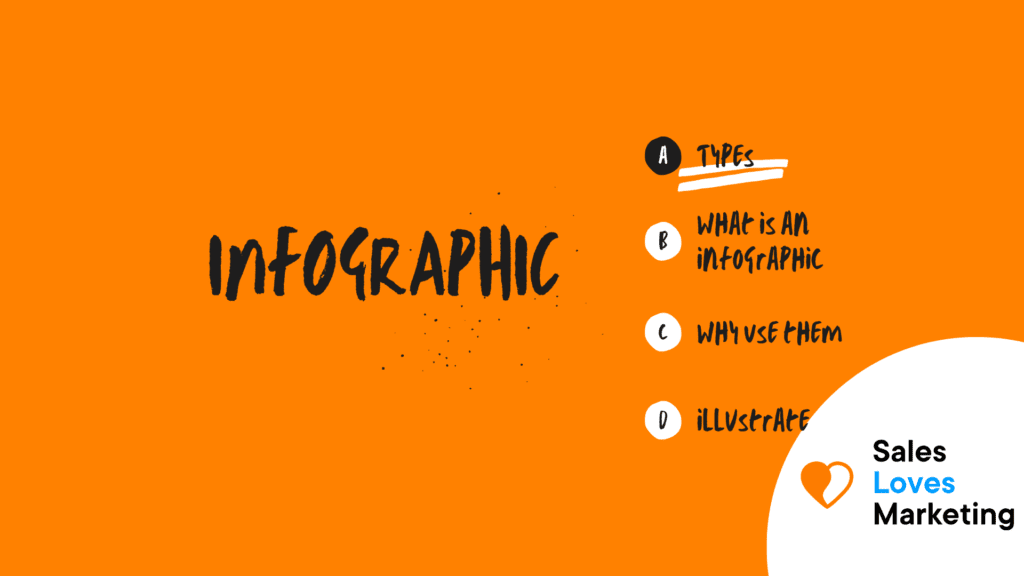What is Infographic?
An infographic is a collection and combination of explanatory images, graphics, and minimal text that provide easy-to-understand information and an overview of a given topic.
Recommended Reading: The 10 best websites for creating Infographics
What are the Types of Infographics?
The most common types of infographics are named and explained below:
Statistical Infographics.
They use graphs, charts, and fonts to visually display research, facts, and figures to make them more interesting and easy to understand.
They can refer to a single investigation or use a mix of different visualizations to show various facts and qualities about a topic.
Statistical infographics generally have less text and are more data-focused.
Informative Infographic.
They use a combination of visuals and text to illustrate or simplify a topic or lead readers through a series of steps.
They generally contain many texts and can be used to summarize video and blog posts, and often accompany a visual explanation to tell a story.
Timeline Infographic.
These are useful for displaying data and information in chronological order. They can be used to visually show a brand’s history or evolution over time.
They can also be used in project management to create schedules of works in progress.
Process Infographic.
In this type of infographics, flowcharts are usually used, timelines so that readers are guided through a series of stages or in aid of the decision-making process.
They serve to give guidance to a company’s workers and explain the stages of a process to customers.
Geographic Infographics.
They are used to display geographic information, local data, and statistics, both national and global, visually.
They are great visuals to include in blog posts, reports, and presentations.
Comparison Infographic.
In these, various objects, concepts, products, brands, people are visually compared, which helps appreciate differences and similarities.
Column-like designs are used in them to make comparisons of different topics easier, side by side.
Hierarchical Infographic.
Here the information is usually displayed in a pyramid to better show the different levels of information.
List of Infographics.
Lists of infographics can present and summarize information based on lists. Either a list of elements, factors, and even stages to achieve something.
Resume Infographics.
This is a new way of presenting resumes to employers. Progress bars, arrows, icons, and radial displays are used to show the level of study, experience, skills, and interests, among other aspects.
Anatomical Infographic.
It is used to separate and detail the different parts of some object, system, or a specific entity. It has a diagrammatic format with labels highlighting and explaining the different components of a product.
Related Reading; 10 reasons to use infographics inside your marketing
How do you create an Infographic?
Define the topic and its essential aspects.
It should be as clear as possible when delimiting since it is important to talk about a single topic. The following tips can be used:
- Analyze the objectives and the audience.
- Recognize the main theme.
- Establish the aspects of interest.
- Consider the tone to use and the appropriate language for the audience.
Choose the source of the information and classify the data.
Find and choose viable sources of information and data (studies, reports, reports) for the infographic. They must be up-to-date and reliable sources for the infographic to have credibility.
After choosing the source, study and select the most important data that you want to show.
After the information is divided, an order to display it should be created to help users fully digest it.
Select a model.
There are several types of infographics, depending on the type of information you want to show the audience; in the previous question, the most used are named and explained.
Design the infographic.
To create an infographic, you must think of the information as an image and in a way that attracts people’s attention, using a visual composition of elements that attracts people’s attention and generates a certain impact. The following components should be considered:
- Background.
- Typeface.
- Graphics and illustrations.
Recommended: Canva vs Photoshop
Correct, edit and publish.
Before publishing the infographic, it is convenient to share a correction version among colleagues to look for possible areas for improvement and correct errors.
Once the final version of the infographic is ready, publish the file in an optimal image format (jpeg, gif, png), taking into account the resolution, the size of the file.
